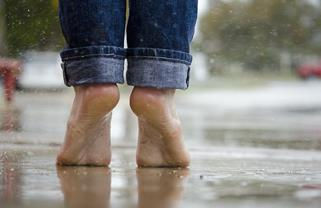Sedentary lifestyle leads to ill health
- Chin Ling
- Jun 29
- 3 min read
We were made to move. Many of us have gone from regular physical activity as children, walking to and from school, to spending hours as adults rooted to one spot. (I am just as guilty as the next person.)

Our modern world has evolved to make everything easier for us. We have the ubiquitous car to take us from A to B and back. Multi storey buildings have escalators or lifts while the stairs are usually hidden away somewhere. Supermarkets deliver to our door. Takeaways deliver. We don’t even need to walk a few steps to the pc to place an order; it can be done on the phone. On several university campuses in the USA, robots deliver groceries and takeaway food directly to the students and staff so they don’t have to go out to buy food.
Aside from the possible concern that if you don’t use it, you may one day lose it, why should we move?
Staying in one position for long periods weakens the muscles. Moving helps overall health, from cardiovascular to muscles, bones and blood sugar. Look up Sedentary Death Syndrome (SeDS) and you will find information on the association between consistently sitting for long periods and increased risk for heart disease, type 2 diabetes and even cancer.
Although once seen as weird by the rest of the world, Japanese companies used to make exercise compulsory for all personnel. Although this has been phased out in some corporates, millions of Japanese still do their morning 3 minute Rajio Taiso, a series of gentle movements that has been drummed into them since childhood. In addition, NHK broadcast exercise music at specific times during the day so their daytime schedule is broken up with short bouts of movement. (https://www.youtube.com/watch?v=0xfDmrcI7OI)
What if I just go to the gym at the weekend? You can do any exercise or sport you want, and if you enjoy it and don’t have to nag yourself to do it, then you're ahead. If you are not motivated and have to force yourself to exercise, there is some good news. Studies have shown that intermittent short bursts of activity during the day can produce the same health results on your body as one workout a day, depending on the intensity. This could be walking up and down the stairs, a walk around the block, 20 squats, not just once but several times a day. Think of regular movement like revving your engine and keeping it warm. If you are only able to do gentle movements throughout the day, i.e. not enough to get your heart rate up, you will have to do this about 6 times longer than if you did 1 intense daily workout but this may work for you if that is all you can manage. Make a habit of getting up every hour to stretch, move, make a drink. The key is to move throughout the day.
Studies on people who live long and healthy lives show that they move a lot. Movement is not exercise, it’s just a natural part of daily life.
Interesting facts:
* In Cluj-Napoca in Romania, if you can do 20 squats in 2 minutes, you get a free bus ticket. How good is that!
* Pontevedro in north west Spain is one of the best success stories of a large-scale pedestrian town. 90% of its residents walk or cycle everywhere. Sounds like utopia!




Comments